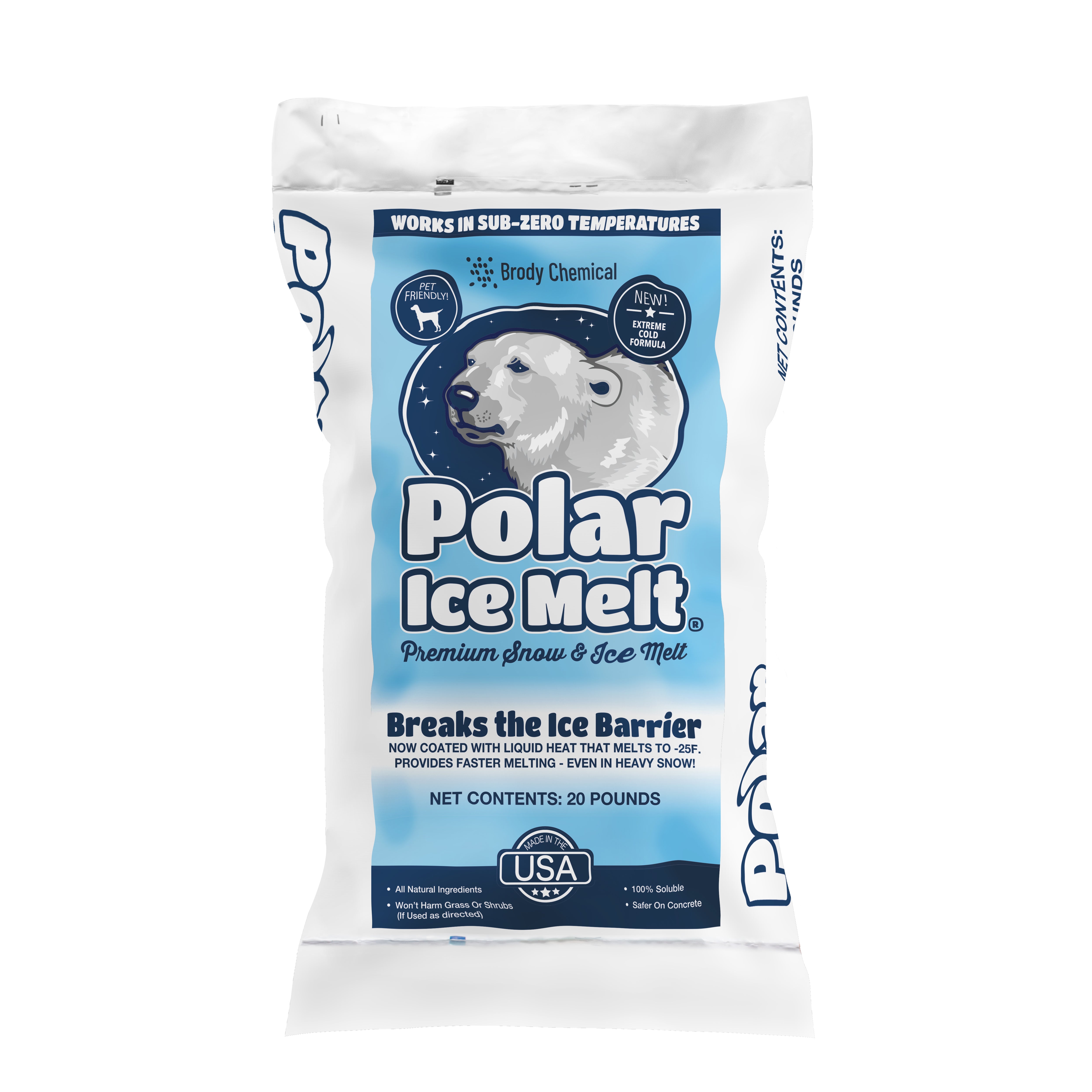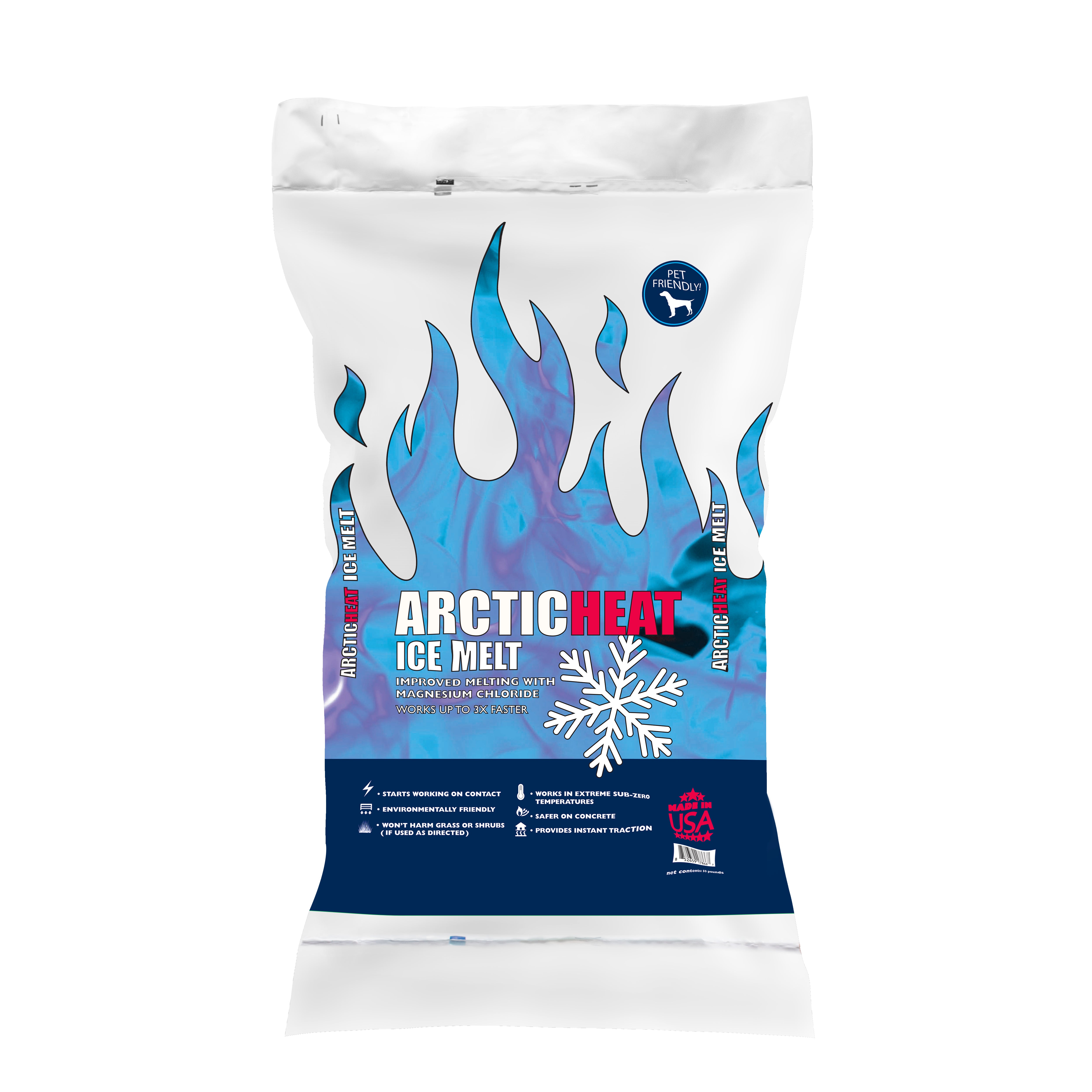Dumping bags of rock salt on your driveway won't help when the thermometer hits single digits. Most property owners learn this lesson the hard way during brutal cold snaps. Salt has clear limits that kick in around 15°F. Know these boundaries, and you can plan smarter winter strategies that actually work when temperatures nosedive.
Key Takeaways
- Road salt quits working below 15°F (-9°C) and struggles badly under 20°F (-7°C)
- Salt drops water's freezing point by disrupting ice crystal formation
- Liquid treatments and enhanced products push effectiveness into colder ranges
- Each de-icer type handles different temperature zones better than others
The Science Behind Salt and Ice Melting
Salt breaks down into tiny particles when it hits moisture. These particles mess with how water normally freezes by getting in the way of ice crystals trying to form. Think of it like throwing marbles into a jigsaw puzzle - everything gets disrupted.
The road salt melting point depends on how concentrated your brine gets on the pavement. Pure water freezes at 32°F, but perfect lab conditions can push salt solutions down to -6°F. Real roads never see these ideal setups.
Salt and ice melting gets tougher as cold increases because several things work against you:
- Cold makes salt dissolve like molasses
- Colder temps need way more salt concentration
- Pavement bleeds heat fast
- Cars help spread the brine around
Understanding these basics matters for anyone serious about winter maintenance. Professional snow and ice melt products work around these natural limits through better chemistry and smarter application methods.
But here's the kicker - even knowing the science won't save you when Mother Nature drops the hammer. Temperature trumps everything else.
Recommendation:
Facing winter's chill? Brody Chemical Snow & Ice Melt products are designed to tackle icy conditions effectively. Whether you're dealing with sidewalks, driveways, or commercial spaces, our solutions ensure safety and reliability.
Explore Now →
Road Salt's Critical Temperature Threshold
Regular sodium chloride hits a brick wall around 15°F. Push below that mark, and your road salt effective temp plummets faster than a rock off a cliff. Surfaces stay slick no matter how much you dump on them.
The decline happens in stages:
Performance Breakdown by Temperature:
- 32°F to 25°F: Salt works great with normal amounts
- 25°F to 20°F: Still decent but needs more product
- 20°F to 15°F: Sluggish melting, patience required
- Below 15°F: Basically useless
Traffic makes a huge difference by creating friction heat. Busy roads might see some salt action while parking lots stay frozen solid. Pavement temperature can run warmer than air temp, especially when sun hits dark asphalt.
Humidity plays tricks too. Bone-dry air makes it harder for salt to form the wet brine needed for melting. Wind steals heat from pavement faster than you can replace it.
Some regions get lucky with freeze-thaw cycles that help salt work better. Other places deal with weeks of sub-zero torture where salt becomes expensive gravel.
The bottom line? Don't count on regular salt once you hit the teens. Physics wins every time.
Why Standard Rock Salt Fails in Extreme Cold
Sodium chloride has built-in limits that can't be wished away. As temperatures drop, you need crazy-high salt concentrations that just aren't practical on real surfaces.
Ice crystals form faster when it's really cold, overwhelming salt's ability to interfere. Salt granules take forever to dissolve in extreme conditions. No dissolution means no brine. No brine means no melting.
Cold pavement creates a catch-22 situation. Salt needs some moisture to start working, but frozen surfaces often lack enough humidity. Light traffic areas get forgotten because there's no tire action to crush salt and spread brine around.
Even existing brine solutions turn into ice cubes below certain temps. Once that happens, nothing flows or spreads until conditions warm up enough for melting.
Your expensive salt becomes decorative gravel that does absolutely nothing for safety.

Enhanced De-icing Solutions for Sub-Zero Conditions
Liquid de-icers skip the whole dissolution problem by starting wet. They attack ice immediately without waiting around for granules to melt first.
Pre-treating surfaces before storms creates a slick barrier that prevents snow from sticking. Applied early, these treatments make cleanup dramatically easier later.
Different chemicals handle cold much better than plain salt:
Cold-Weather Champions:
- Calcium chloride: Keeps working to -20°F (-29°C)
- Magnesium chloride: Effective down to -13°F (-25°C)
- Potassium chloride: Functions until 12°F (-11°C)
- Calcium magnesium acetate: Operates to 20°F (-7°C)
Professional liquid ice melter products blend multiple compounds for serious cold-weather punch. These formulas stay liquid at brutal temperatures while melting ice faster than granular alternatives.
Treated salt takes regular sodium chloride and coats it with liquid boosters. You get enhanced performance without paying premium prices for exotic chemicals.
The key insight? Fighting extreme cold requires weapons designed for the battle.
|
De-icer Type |
Effective Temperature |
Melting Speed |
Environmental Impact |
Cost Level |
|
Standard Rock Salt |
15°F (-9°C) |
Moderate |
Heavy chloride runoff |
Low |
|
Calcium Chloride |
-20°F (-29°C) |
Fast |
Moderate plant damage |
Medium-High |
|
Magnesium Chloride |
-13°F (-25°C) |
Fast |
Gentler on surfaces |
Medium-High |
|
Liquid Ice Melter |
-15°F (-26°C) |
Very Fast |
Depends on formula |
Medium |
|
Treated Salt |
5°F (-15°C) |
Fast |
Less than straight salt |
Medium |
Choosing the Right De-icing Product for Your Climate
Pick your weapon based on what winter throws at you. Mild climate zones can stick with regular salt most of the time, switching to better stuff only when arctic blasts hit.
Brutal winter areas need heavy-duty solutions as standard equipment. Higher costs upfront beat the alternative - lawsuits, accidents, and frustrated customers.
When conditions get nasty enough to shut down roads, ice beater delivers the firepower needed. This professional-grade formula works when everything else gives up.
Places that see extended sub-zero punishment need specialized tools like polar ice melt. These advanced products keep working when regular de-icers turn into expensive decorations.
Environmental concerns matter more every year. Eco melt handles ice while going easier on plants, concrete, and metal. Good performance doesn't have to mean ecological destruction.
Pick Based on Your Winter Reality:
- Occasional cold snaps (rarely under 20°F): Regular salt plus liquid backup
- Regular cold (10-20°F range): Treated salt or blended products
- Harsh winters (often below 10°F): Calcium or magnesium chloride
- Extreme conditions (weeks of sub-zero): Specialized cold-weather formulas
Storage needs vary wildly between products. Plain salt stores anywhere dry. Liquids need freeze protection and proper containers. Calcium chloride sucks up moisture like a sponge and needs sealed storage or it turns into concrete.

Maximizing Salt Effectiveness in Cold Weather
Pre-treating beats reactive scrambling every time. Hit surfaces with liquid before snow flies, and you prevent ice from getting a foothold. Less product usage, better results.
Timing matters more than most people realize. Early morning applications catch any solar help available. Evening treatments might freeze before they can do any good.
Combination attacks work best in borderline conditions. Light liquid pre-treatment followed by granular backup extends your effective range beyond what either method achieves alone.
Cold weather demands schedule changes. Frequent light applications beat heavy single shots because they keep active brine on surfaces longer. Think machine gun, not cannon.
FAQ
At what exact temperature does road salt become completely useless?
Road salt stops working around 15°F (-9°C), with maybe some weak action down to 12°F (-11°C) if conditions align perfectly.
Can I make regular road salt work better in extreme cold?
Mix it with calcium chloride or hit surfaces with liquid de-icer first to push effectiveness lower.
What's the difference between rock salt melting point and its effective temperature?
Lab theory says salt can work much colder, but real-world conditions limit practical effectiveness to 15-20°F.
Should I use more salt when temperatures drop below 20°F?
More salt below 20°F wastes money and does nothing; switch to better de-icers instead.
How do liquid de-icers perform compared to granular salt in extreme cold?
Liquids win because they start working immediately without needing to dissolve first, making them much better below 15°F.



